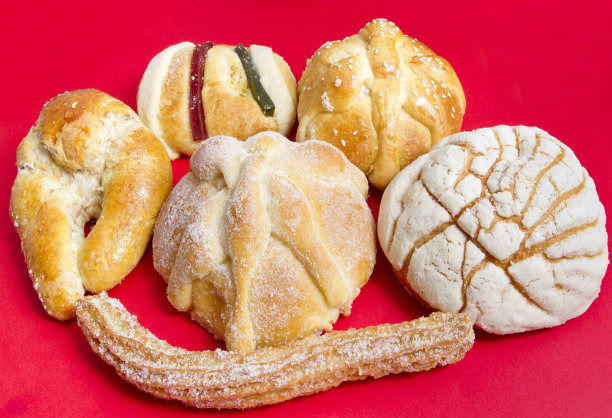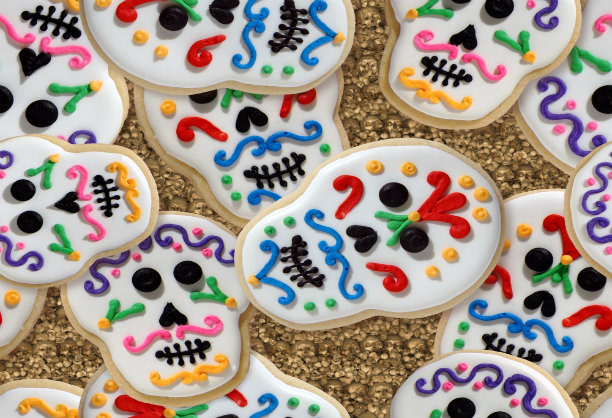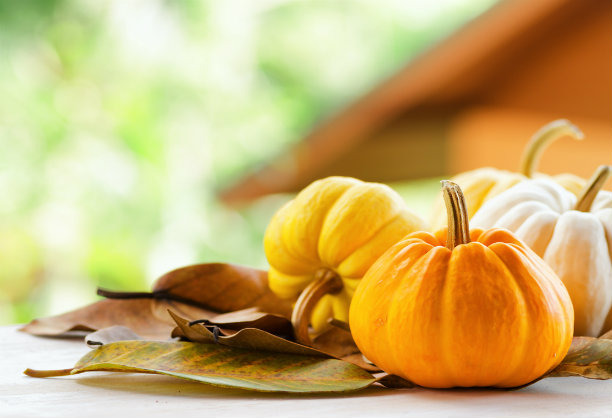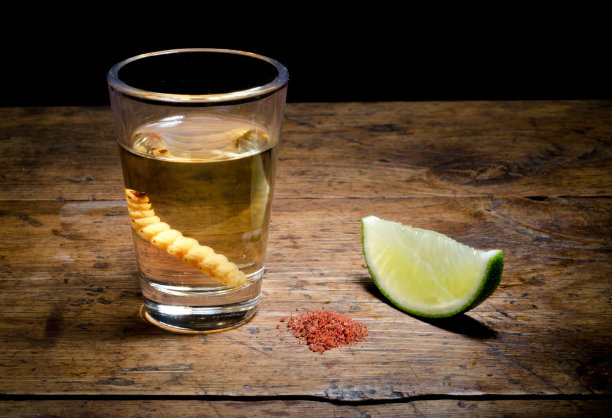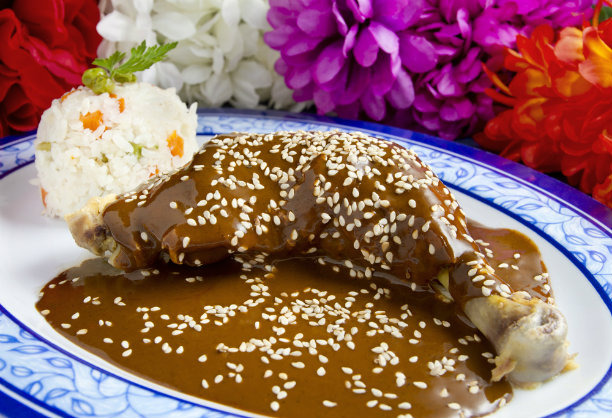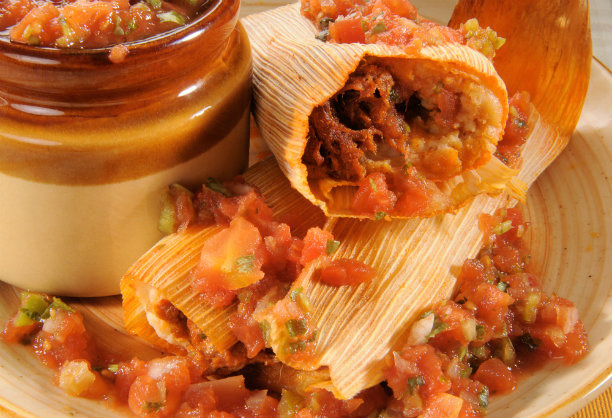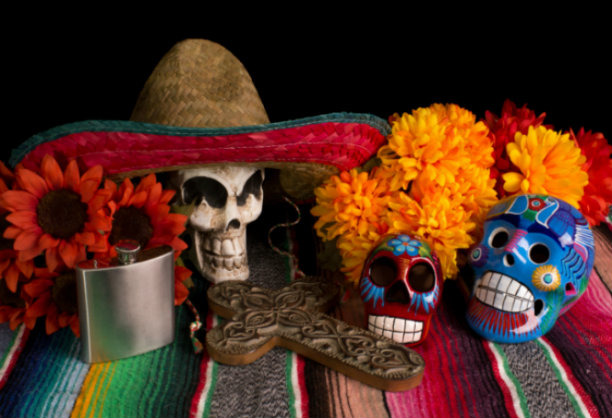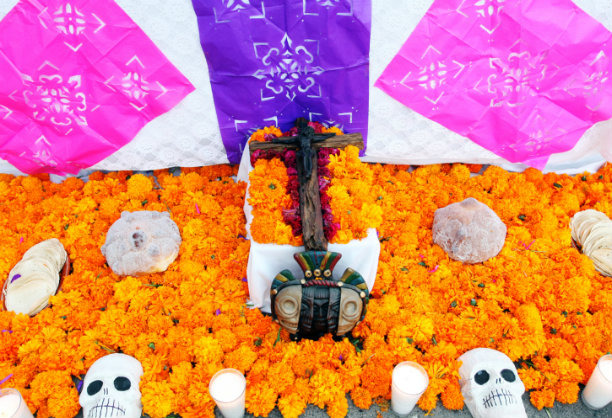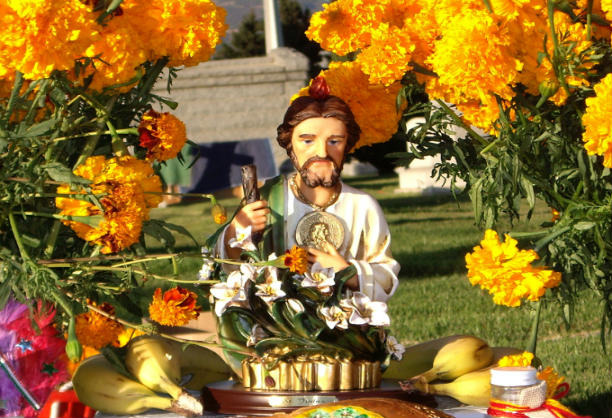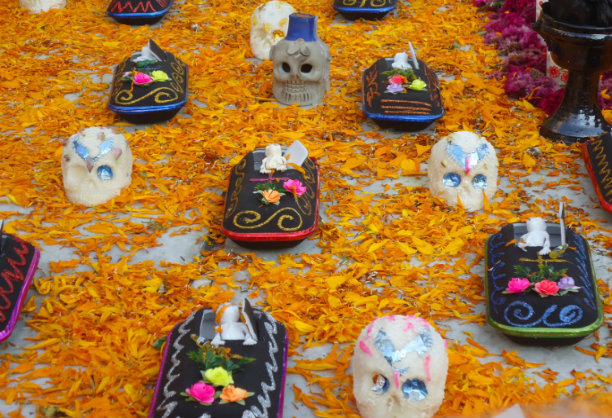A Guide To Dia De Los Muertos (Slideshow)
This "bread of the dead" is a sweet, baked roll that some travel far and wide to buy before the festivities begin on Nov. 1. The dough is often twisted into shapes like bones and layered on top of the circular loaf. This round configuration mimics the idea of the "circle of life."
Sugar Skulls
These sweet treats are arguably the most universally recognizable image associated with el Dia de los Muertos. The skulls, or calaveras, are created by pressing a granulated sugar mixture into skull-shaped molds. Once dry, they receive the royal treatment — icing, colored foil, feathers — you name it!
Candied Pumpkin
Pumpkin season is in full bloom when Dia de los Muertos rolls around every year. Recipes for delicious candied pumpkin are simple and the end result is quite similar to candied yams. Only a handful of ingredients are needed, including autumnal favorites like cinnamon and brown sugar.
Beverages
One major component of the ofrenda is alcoholic spirits (for the souls of adults only, of course!) The popular Mexican liquor mezcal is commonly placed on altars as a reward for the weary, ghostly travelers. Mezcal is smoky yet sweet in flavor and pairs well with a number of things, including fruit juices, spices, and other spirits. Another traditional beverage called atole, a masa-based corn drink, and good old hot chocolate are tasty options that are appropriate for all ages.
Mole
In Mexico, mole sauce comes in many varieties. Outside the country, the term usually refers to mole poblano, a flavorful sauce served with meat. While mole is served year-round in Mexico, it is especially popular during celebrations. Mole dishes are often prepared and placed with the offerings to quell the souls' voracious appetites.
Tamales
Like mole, tamales are prepared for many occasions in Mexican culture. The masa, a corn-based dough, is wrapped and then steamed in leaves, which are removed prior to consumption. The tamales, which date back to Ancient Mayan cultures, are stuffed with fillings ranging from cheese to meat to fruits. On el Dia de los Muertos, the dish is served on dinner tables as well as altars for the spirits.
Décor
In addition to the rich Mexican cuisine, a lot of work is put into creating a welcoming atmosphere, so the souls will have a comfortable place to rest and enjoy their feasts. Flowers are the focal point of most altars, with marigolds serving as the main source of floral architecture. Incense and the illumination provided by thousands of candles add to the intoxicating ambiance of a cemetery full of people praying, talking, and telling stories. It is also common for mariachi bands to roam the graveyards, playing the songs that passed souls favored most. This graveyard scene is not a ghoulish affair, but rather a tranquil, spiritual meeting ground for earthly and otherworldly spirits to convene.
The 'Ofrenda'
The altar is the chief centerpiece in any Dia del los Muertos reception. Adding to the flowers, candles, and copious amount of food and drink, possessions that belonged to the deceased are placed on the altar. The idea is to draw the spirits back to their homes, so they can hear the prayers and stories being communicated in their honor.
Favorite Foods
To lure the spirits to their altars, the favorite foods of the deceased are prepared and offered up for them to feast upon. All food placed on the altar is only for the souls, not for participants celebrating el Dia de los Muertos. After all, these apparitions have traveled very far, and need some sustenance after an arduous journey.
Child Spirits
During the two-day ceremony of Dia de los Muertos, the souls of children are honored first, beginning at midnight on Oct. 31. Toys are placed on the altars, and hot chocolate is a popular offering for young souls. Adults are celebrated the following day.
